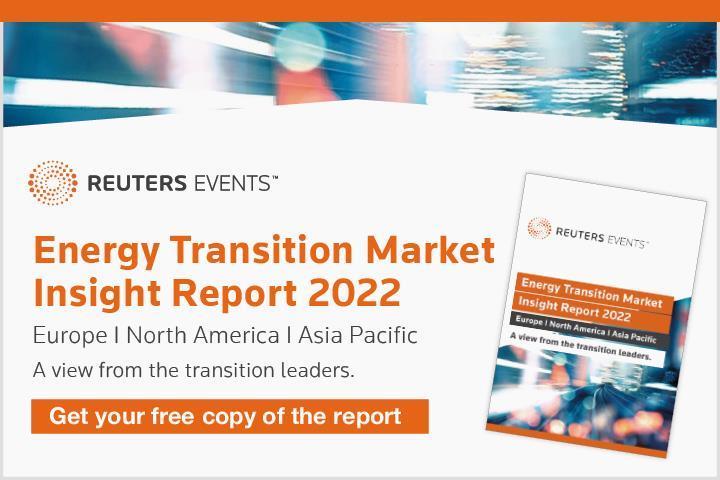
In May 2021, the International Energy Agency (IEA) released Net Zero by 2050: a Roadmap for the Global Energy Sector, the first comprehensive study of how to transition to a net zero energy system by 2050, while ensuring stable and affordable energy supplies, universal energy access, and enabling robust economic growth.
While the world does has a viable pathway to building a global energy sector with net-zero emissions, it said, but it is narrow and requires an unprecedented transformation of how energy is produced, transported and used globally. The energy transition broadly aims to switch the global energy sector from fossil-based to zero-carbon by the second half of this century and the report offers a roadmap, with more than 400 milestones, to help us get there.
Reuters Event’s latest Energy Transition Outlook and Market Insight report harnesses original analysis and insights from our flagship regional energy transition conference series to deliver a guide the the status of the transition across Europe, North America and Asia Pacific. You can request a copy of the report here: https://bit.ly/3eVUdbJ
This need for individual, national plans to achieve decarbonisation came through at a series of online discussion at the end of last year, just days after the closing speeches had been made at COP26 in Glasgow. They looked at the energy transitions in Europe, North America and Asia-Pacific (APAC), and while common goals existed, there were also individual regional challenges – and opportunities – around the energy transition.
In Europe is ahead of the curve in many respects. Renewables already account for just under 20% of energy use, there’s a solid carbon trading structure, and a host of innovation, forward thinking companies and public sector organizations, too. Yet it has been estimated that the continent will need to invest €379 billion a year until 2030 just to stay within the 1.5-degree pathway. The key here was maintaining momentum, moving forward with technologies and incentivizing new investment.
In the APAC region infrastructure and creating a grid capable of supporting mass electrification are essential, as is collaboration between states and greater inter-connectivity between national grids. Energy equity is also a major issue across the continent.
At the core of U.S. energy policy is a pledge to invest trillions of dollars into zero-emission electricity infrastructure by 2035. This includes plans to electrify America’s love of the motor car, develop a smart grid that can assimilate the growth in decentralised power generation and find a role for the oil and gas industry in the transition to a low carbon future.
To deliver on climate goals, while also meeting an ever-growing demand, the energy sector must accelerate innovation at scale, a dual challenge that will create new opportunities for clean technology.
The IEA report predicts that by 2050, the energy world will look completely different. Global energy demand, it says, will be around 8% smaller than today yet it will be serving an economy more than twice as big, and a population with two billion more people.
Almost 90% of electricity generation will come from renewable sources, with solar – by then the world’s single largest source of energy – and wind accounting for almost 70%, with most of the remainder coming from nuclear.
As a result, fossil fuels’ share of the market will have dropped from almost four-fifths to slightly over one-fifth, holding on in the manufacture of goods where the carbon is embodied in the product such as plastics, in facilities fitted with carbon capture, and in sectors where low-emissions technology options are scarce.
This is the picture of the energy transition and moving it forward will involve developing and delivering new technology at scale, from smart grids, to floating offshore wind turbines and carbon capture and storage. Yet as was pointed out, much of the technology needed to decarbonise hasn’t yet left the drawing board.
Get full access to the report today directly to your inbox, here: https://bit.ly/3eVUdbJ
Recommended for you
